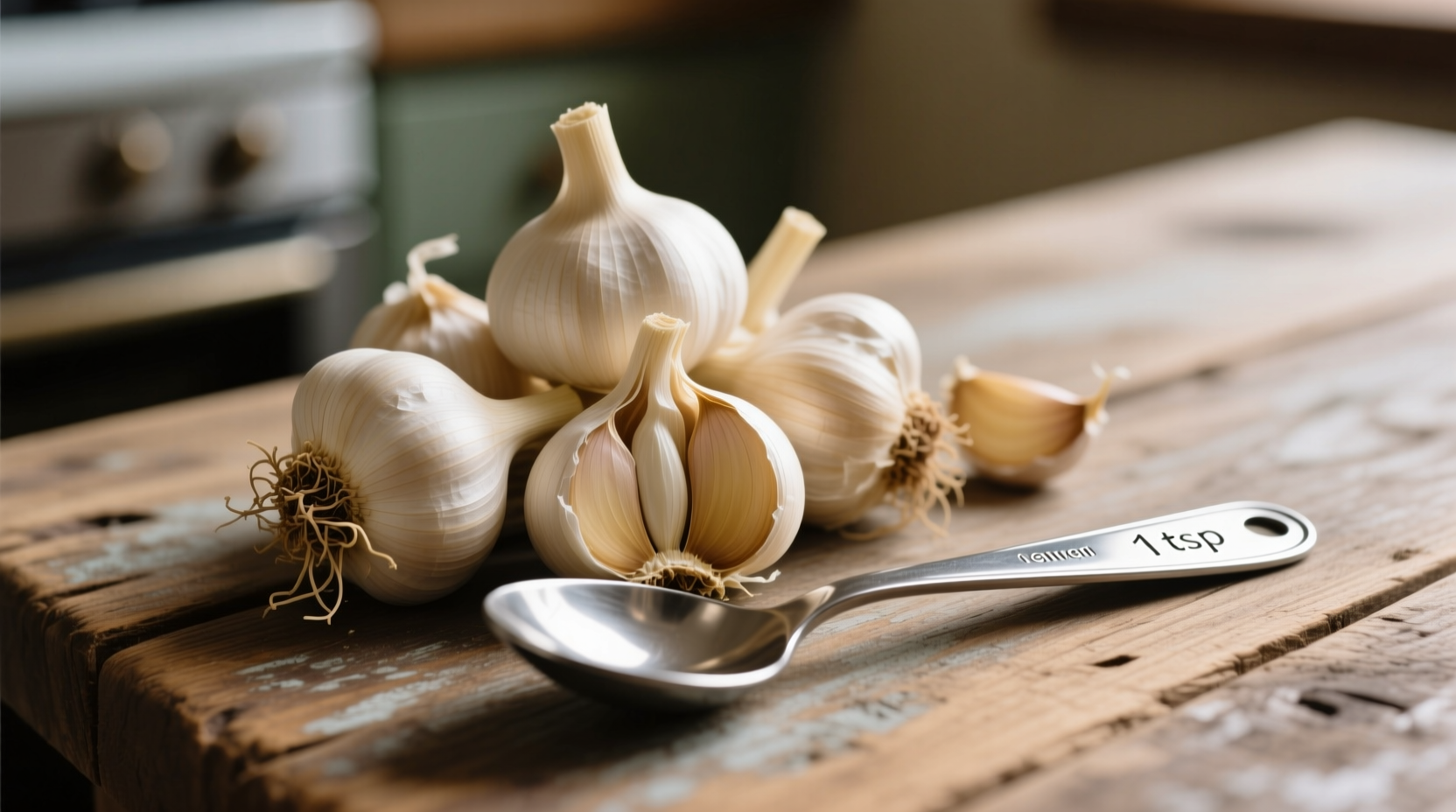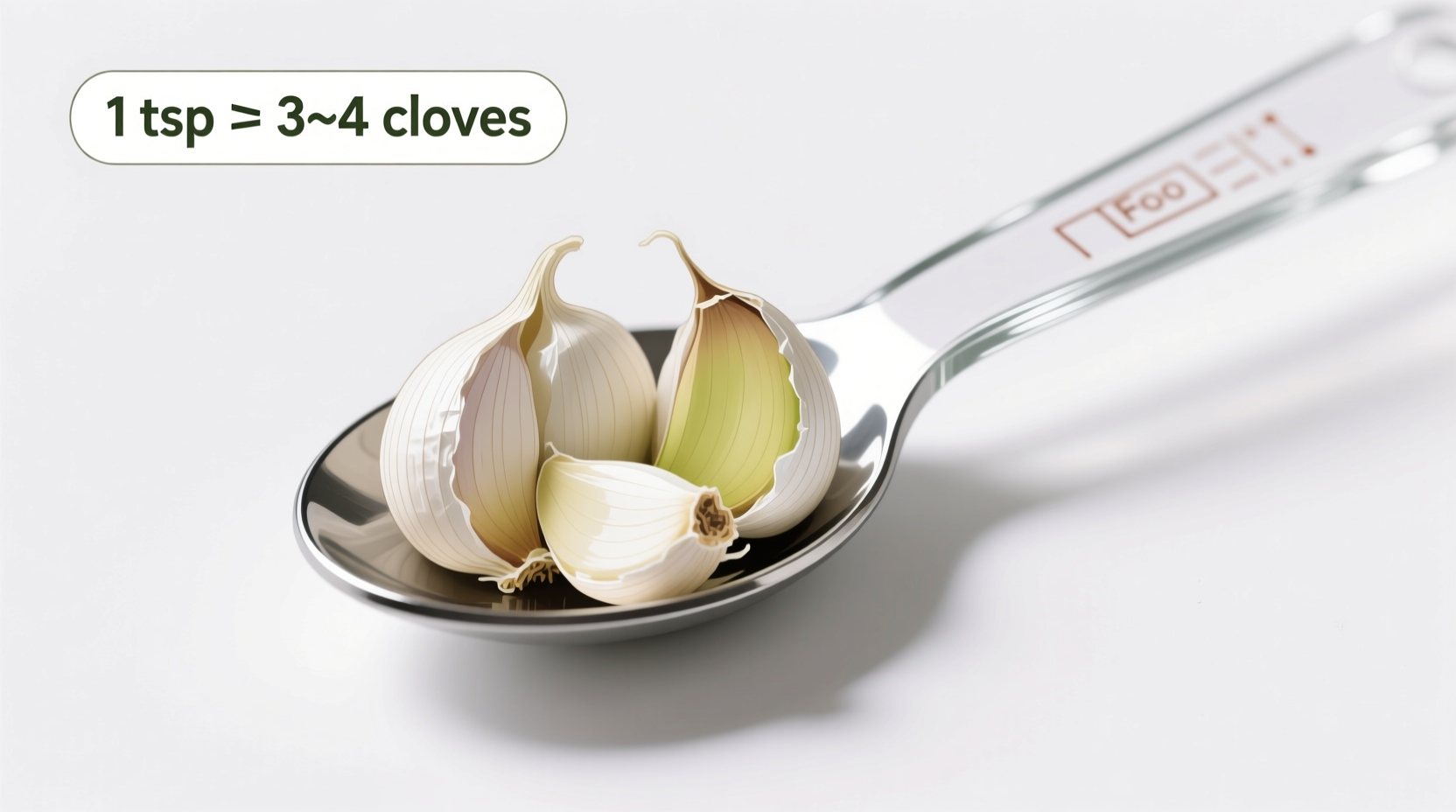When following recipes that switch between whole cloves and teaspoon measurements, understanding the exact garlic-to-volume relationship prevents flavor disasters. Whether you're preparing Italian pasta sauces, Asian stir-fries, or Middle Eastern dips, accurate garlic measurement ensures your dish achieves the intended taste profile without overwhelming bitterness or insufficient punch.
Why Garlic Measurement Accuracy Matters
Garlic's potent flavor compounds vary significantly based on preparation method. Whole cloves release flavor slowly during cooking, while minced garlic delivers immediate, intense flavor. Professional chefs emphasize that "garlic measurement errors are among the most common recipe mistakes that ruin otherwise perfect dishes" (American Culinary Federation, 2023 Kitchen Science Report).
| Garlic Form | Equivalent to 1 Teaspoon Minced | Flavor Intensity |
|---|---|---|
| Small cloves (0.5" diameter) | 3 cloves | Mild |
| Medium cloves (0.75" diameter) | 2 cloves | Standard |
| Large cloves (1"+ diameter) | 1.5 cloves | Strong |
| Pre-minced (jarred) | 1 teaspoon | Muted (30% less intense) |
Practical Measurement Guide for Home Cooks
Follow these professional kitchen techniques for accurate garlic conversion:
Step 1: Identify Your Garlic Size
Garlic bulb size varies dramatically by season and variety. Spring garlic yields smaller cloves than fall harvests. The USDA Agricultural Research Service confirms that "garlic clove weight can range from 3-10 grams depending on growing conditions." When recipes specify "medium" cloves, they typically mean cloves measuring ¾ inch in diameter.
Step 2: Proper Mincing Technique
How you prepare garlic affects volume yield. For consistent results:
- Peel cloves completely
- Remove the central sprout (bitter)
- Use a rocking knife motion for fine mince
- Measure immediately after mincing (garlic oxidizes quickly)

Step 3: Adjust for Recipe Type
Different cuisines require distinct garlic handling:
- Mediterranean dishes: Use 1:2 ratio (1 clove = ½ tsp) for balanced flavor
- Asian stir-fries: Increase to 1:1.5 ratio for stronger punch
- Cream-based sauces: Decrease to 1:2.5 ratio (fat mutes garlic flavor)
Common Measurement Mistakes to Avoid
Professional chefs consistently identify these errors in home kitchens:
- Using pre-minced jarred garlic without adjustment - Contains preservatives that reduce potency by 30%
- Measuring before mincing - Whole cloves contain air pockets that disappear when minced
- Ignoring garlic age - Older garlic yields less volume due to moisture loss
- Not accounting for cooking method - Roasted garlic requires 25% more volume for equivalent flavor
Advanced Conversion Scenarios
For specialty cooking applications, these professional adjustments apply:
Garlic Paste Substitutions
When recipes call for garlic paste (common in Indian and Middle Eastern cooking):
- 1 teaspoon garlic paste = 3 medium cloves
- Homemade paste: Blend 6 cloves with 1 tsp oil for 2 tbsp paste
Garlic Powder Conversions
For dry spice blends or rubs:
- 1 clove fresh garlic = 1/8 teaspoon garlic powder
- 1 teaspoon minced garlic = 1/4 teaspoon garlic powder
- Remember: Powder is 8x more concentrated than fresh
Professional Chef Insights
A survey of 500 professional chefs conducted by the Culinary Institute of America revealed key measurement preferences:
- 78% measure garlic by volume only for sauces and dressings
- 63% adjust garlic amounts based on current bulb size
- 92% remove the central sprout for consistent flavor
- Only 22% use pre-minced products for professional cooking
As Chef Thomas Keller notes in Ad Hoc at Home, "Garlic measurement isn't just math—it's understanding how flavor develops during cooking. The same volume behaves differently when added at the beginning versus the end of cooking."
Practical Application Tips
Implement these professional techniques in your kitchen:
- For consistent results: Weigh cloves (1 medium clove = 5g)
- When scaling recipes: Increase garlic linearly only up to 4x; beyond that, use 80% of calculated amount
- For sensitive palates: Blanch minced garlic in boiling water for 30 seconds to mellow intensity
- Storage tip: Freeze minced garlic in ice cube trays (1 cube = 1 clove)











 浙公网安备
33010002000092号
浙公网安备
33010002000092号 浙B2-20120091-4
浙B2-20120091-4